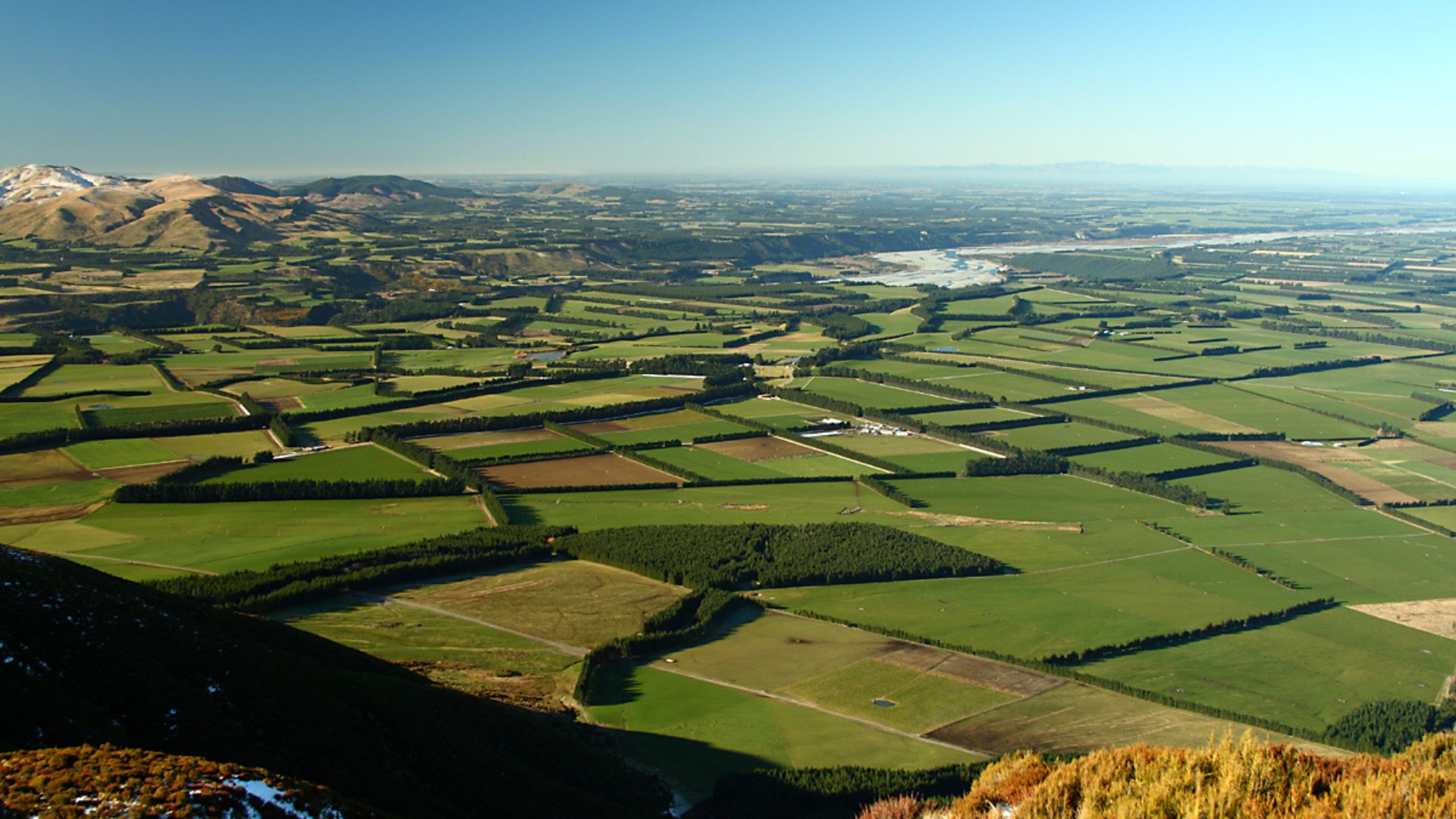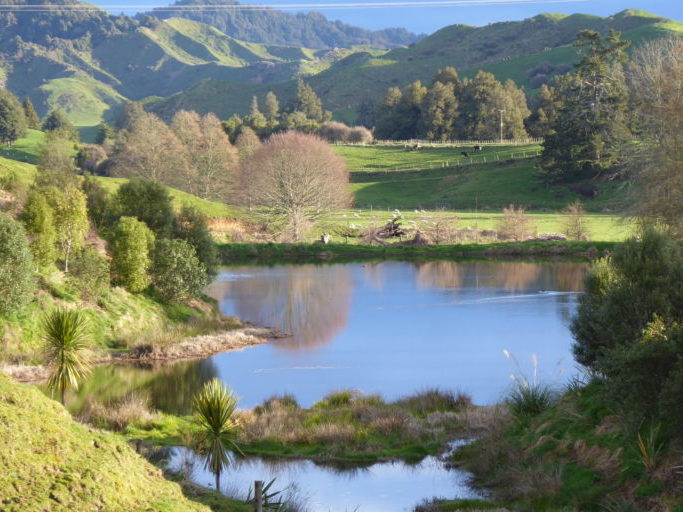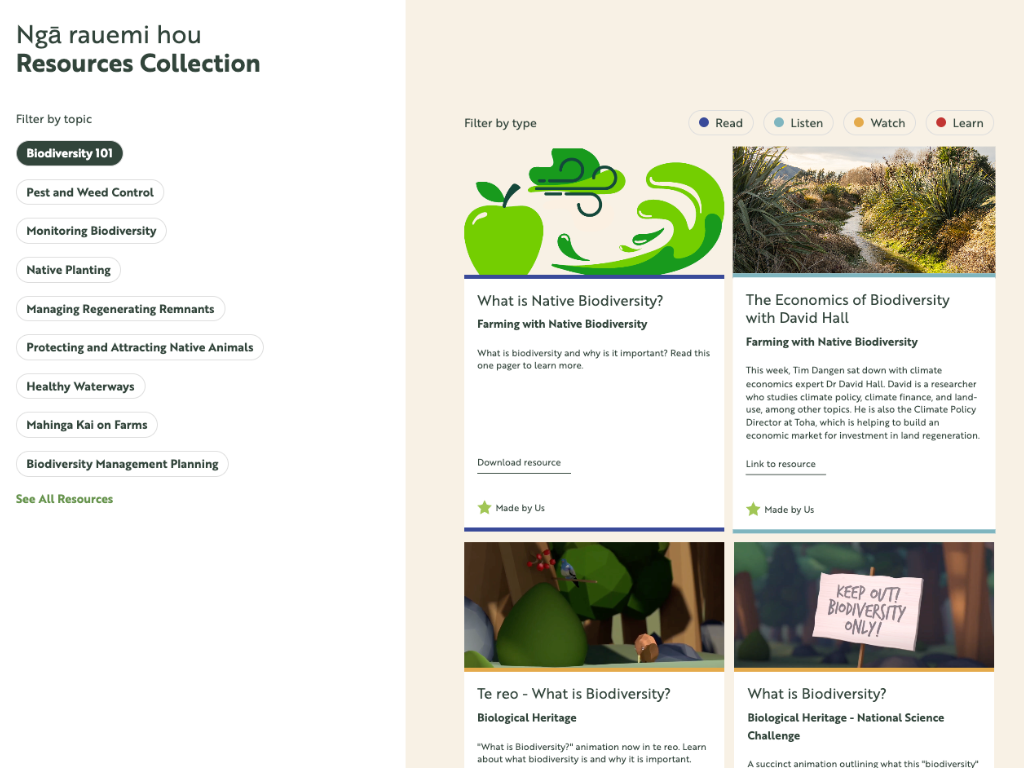Here’s how farmers can dig into practices that make economic sense but also contribute to biodiversity. Many farmers are already tapping into innovative resources, actively sowing the seeds of positive change for on-farm biodiversity.

Breaking ground together
Expecting farmers to do it on their own simply won’t work.
So, Farming with Native Biodiversity has undertaken comprehensive research and experiments to uncover economically viable farming practices that help biodiversity.
Managed by NZ Landcare Trust, the Farming with Native Biodiversity website is a gateway to inspiration. It showcases real-life examples of farm biodiversity plans customised for sheep and beef farms across the North and South Islands.
From engaging training modules, webinars, podcasts, and videos to a comprehensive resource collection, it caters to farmers and advisors at every stage of integrating on-farm native biodiversity.

Topics range from ‘Biodiversity 101’, ‘Managing regenerating remnants’ to ‘Healthy Waterways’.
With half of NZ’s land cover used for pastoral farming, the advantages of protecting and enhancing farm biodiversity are undeniable.
It helps native species, obviously.
But it helps farmers by providing pollination for crops, enhancing water quality, reducing soil erosion, and improving aesthetic values.
However, the reality is that farms are complex businesses, and farm biodiversity and ecosystem management plans can be costly, with additional costs to implement – expert advice and resources take time to find and digest.
Who’s behind it all?

The pilot project, born out of the Biological Heritage National Science Challenge, aims to help a new farming era emerge: “Protecting and enhancing biodiversity should be a normal part of being a farmer, not something special or an extra task done at the end of the day.”
A 2021 study of 500 sheep and beef farmers around the country revealed that most farmers perceive many advantages in maintaining native biodiversity, primarily social and environmental.
The most frequently cited disadvantages were cost and time, which were also the barriers to managing biodiversity.
These barriers inform the resources offered. They are practical and technical, enabling the farming community to take meaningful action on their land.
A case in point: farming with biodiversity on a sheep and beef farm in Canterbury
Hororata Farm, a 395-hectare sheep and beef breeding farm focusing on beef finishing, is redefining what’s possible (PDF, 3.4MB).
The farm’s owners have set their sights on a future where habitat patches are restored to native vegetation, attracting native bird species like korimako and tūī. While this might sound like a far-fetched dream in the biodiversity-challenged Canterbury Plains, it’s anything but.
Hororata Farm presents a blank canvas with ample opportunities. With enthusiastic owners and funding avenues, there are many opportunities to create biodiversity assets on the farm.
Farming with Biodiversity set up a work plan that outlines the necessary tasks for achieving high-quality biodiversity management outcomes at Hororata Farm.
The plan is presented as a 5-year calendar, with step-by-step goals and a draft budget to schedule biodiversity management actions into the working year.
Having a structured approach to planning biodiversity restoration work increases the likelihood of biodiversity management actions being undertaken.
Each goal serves both the farm business and biodiversity outcomes.
For instance, a goal to plant native trees in a specific area benefits the farm by providing shade and shelter for livestock, enhancing soil health, contributing to aesthetics, and allowing customers to associate their products with the farm’s positive impact on native biodiversity.
You can read more about the project online and look over their resources on the attractive and easy-to-use site: Farming with Native Biodiversity.

